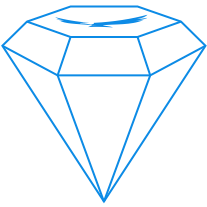Enterprise Design Canvas – introduction
A widely adopted method to release creativity in the workspace is the Business Model Canvas from A. Osterwalder et al. An excellent visualisation tool to innovate or improve ones business model. From an enterprise architecture point of view THE starting point for a viable business architecture. So one question remains:
“How to bridge the Business Model Canvas to an enterprise design, modeling or architecture approach and still remain thinking visual?”
The strength of Business Model Canvas is the value proposition with its primary focus on the customer. The canvas contains 9 major building blocks, basically with a delivery view (Customer Segments, Value Propositional Channels, Customer Relationships and Revenue Streams) and a planning view (Value Proposition, Key Resources, Key Activities, Key Partners and Cost Structures)
To extend Business Model Canvas with the Enterprise Design Thinking approach – common for enterprise modelling and architecture – we have created the Enterprise Design Canvas. It enlarges the Business Model Canvas with the relevant building blocks and required details to generate a conceptual Enterprise Design, which is a holistic design as a starting point for a combined business and Information Technology architecture.
It is called a canvas because it has the same visual presentation as business model canvas and provides the same interpretation. The Enterprise Design Canvas exists of the following building blocks.
The Enterprise Design Canvas – Business:
- Value Proposition – The Enterprise Design Canvas elaborates on products and business service classifications to address the big picture.
- Customer Relations – The Enterprise Design Canvas is reusing the Business Model Canvas scope for this building block
- Business Channels – The Enterprise Design Canvas explicitly calls this building block Business Channel to distinguish it from application channels (i.e. interfaces) and technology channels (i.e. devices)
- Resources (incl. People & Information) – The Enterprise Design Canvas highlights the human and knowledge resources involved in the execution of the activities.
- Activities – The Enterprise Design Canvas drills down the key business activities into main, supporting and management processes and process activities which are involved in realizing the business services and products
The Enterprise Design Canvas – Application:
- Application Functions & Data Objects – The Enterprise Design Canvas addresses the Application Functions required to (partly) automate the processes and the Data Objects involved in the storage of the Information part of these automated processes
- Application (& Data) Services – The Enterprise Design Canvas captures the Application Services, which expose the Application Functions to automate the business services. The required data services expose the data objects to the business services and products.
- Interfaces – The Enterprise Design Canvas explicitly mentions the Interfaces connecting users to the application services
The Enterprise Design Canvas – Technology:
- Technology Functions – The Enterprise Design Canvas highlights the Technology Functions required to deploy and host the Application Functions and Data Objects
- Platform & Infrastructure Services – The Enterprise Design Canvas captures the Platform Services and Infrastructure Services required to support the business services, application services and data services.
- Devices – The Enterprise Design Canvas records the technology devices involved in consuming Application Services by the User
The Enterprise Design Canvas – Contextual (Passé Partout)
- (Revised February 2014) Goal & Objective (incl. Strategy, Rules) – The Enterprise Design Canvas adds a building block to capture Drivers, Goals, Objectives, Rules and Requirements
- Customer & User Segments – The Enterprise Design Canvas adds User segments to the Customer Segments. The main reason is to address the different types of users using Interfaces via Devices
- Partners & Stakeholders – The Enterprise Design Canvas elaborates Key Partners into all relevant partners and stakeholders involved or impacted
- (Revised February 2014) Performance – The Enterprise Design Canvas stretches from Costs into performance of the business operation. It focuses on all aspects of efficiency
- (Revised February 2014) Value – The Enterprise Design Canvas prolongs from Revenue Streams into the value generated by business operations. It focuses on all aspects of effectiveness
Next blog will explain the way of working with the Enterprise Design Canvas
© ARTe Group BV 2013 – All rights reserved



